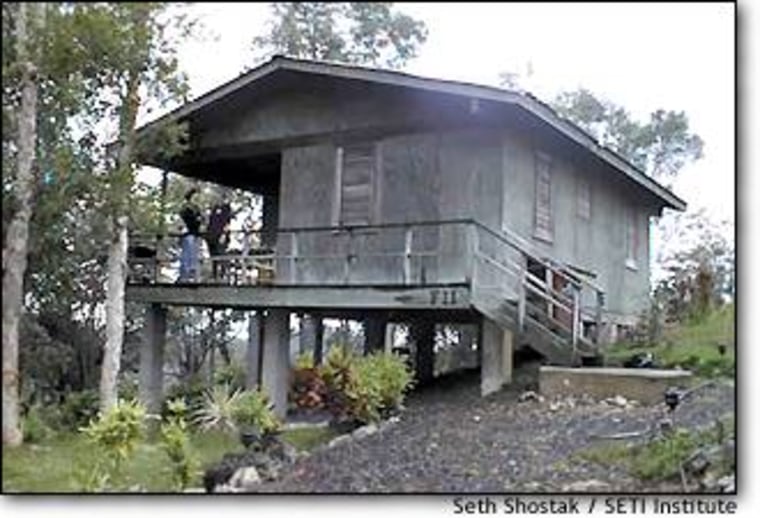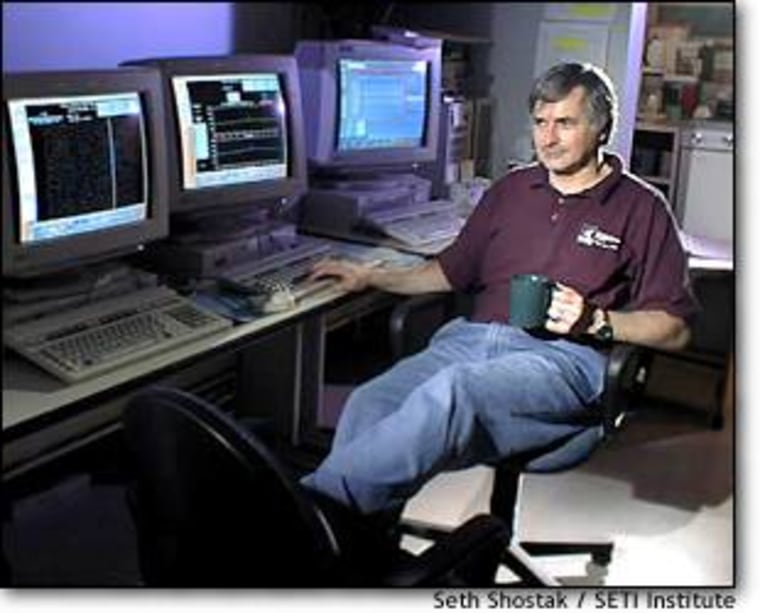I walk into the small cafeteria, and ask what’s for dinner. It’s a rhetorical question of course, because after three days at the observatory I know what the fare will be: chicken with rice. The cook answers politely, but with the hint of a satisfied smile: “We have rice. With chicken.”
They say that explorers in the Antarctic begin dreaming of food after a week. Well, this isn’t Antarctica, and I don’t want to cause major scandal by grousing about the grub. Truth be told, the food at the Arecibo radio telescope is pretty tasty. But if I down one more meal of rice and chicken, I’m going to puff up into a giant, white ellipsoid, covered with feathers.
Life at the telescope is like life at a monastery. There’s little variation in either the routine or the food, and the hedonistic diversions of the secular world (such as going to the movies) are largely non-existent. An observer is on this campus for one purpose only: to efficiently collect data. Deal with it.
If this is a monastery, then the telescope control room is the chapel. Here I spend every evening glaring at the computers and keeping a log of our observations. Around midnight, Jill Tarter — the real-life equivalent of the Jodie Foster character in the movie “Contact” — comes in to take over the helm of Project Phoenix. But I can’t head for bed until I’ve handled my e-mail and other daily obligations. So sometime between 3 and 4 a.m., I stumble out the door and start up a gravel path carved into the side of a limestone hill. Small lamps light the way. It’s the slow end of the night, but not everyone’s asleep. The tropical forest is abuzz with its own insect-and-frog percussion section — loud clicks, strange hoots and the incessant two-tone beeps of the Puerto Rican coqui.
The path doesn’t go far before it dead-ends on wooden stairs. There are 119 steps up the hill to Bachelor Quarters No. 1, where I bunk. I know. I’ve counted them every night. I recall that it was in one of these residences that Jodie Foster and Matthew McConaughey spent a romantic evening in “Contact.” In the movie you see the outside of one of these nifty bungalows, finely crafted of bare wood set on concrete blocks.

But the classy interior where Jodie and Matthew get to know one another better was a Hollywood set. The inside of the real bungalow lies somewhere between spartan and functional, and is below minimum standards for romance.
Once inside, I close the window shutters, being careful not to squish any of the small lizards that like to hang out on the screens, and turn on the air conditioner. At night, the cooling is an option. But I sleep late, and without the air conditioning, there’s a danger that I’ll drown in a pool of sweat before 10 a.m. Crawling into bed, I soon drift off to the sound of the compressor cycling, kind of like barbells rolling down steel steps.
By late morning, I’m showered and dressed in the obligatory T-shirt and jeans. The usual sleep time for Project Phoenix folk is six hours, and after a week of this everyone has a slow-moving demeanor caused by chronic sleep deprivation. “Deal with it,” I think, as I amble back down the steps towards the cafeteria. It will be another day of wrestling with technical problems, attending meetings and logging observations. I wonder if I should ask the cook what’s for lunch.
Seth Shostak is senior astronomer at the SETI Institute in Mountain View, Calif.
More dispatches from the SETI search:
Sept. 17, 1998: Front line in the search for E.T.
Sept. 20, 1998: Free time and false alarmsMarch 18, 1999: The alien hunters are back at it
March 22, 1999: SETI sleuths track down the glitchesMarch 26, 1999: Expansive musings on a dwarf star
March 31, 1999: SETI's waiting game: Deal with it
